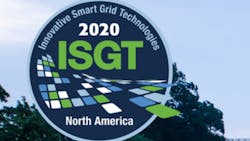IEEE ISGT NA 2020 to Offer Half-Day Tutorials
To kick off the ISGT NA 2020 conference, the IEEE is offering half-day tutorials on Monday, Feb. 17, 2020. See the full schedule.
The first tutorial on the Smart Grid and OT/IT will feature Doug Houseman of Burns & McDonnell. From 8 a.m. to noon, he will give an overview of new conceptual/OTIT systems for smart grid issues and lessons learned with the conventional stack of OT systems. He will also give an introduction to the concept of a Grid Management System (GMS), data requirements and volumes and standards for smart grid IT systems. In addition, he will discuss regulations for grid security vulnerabilities and risks in smart grid systems and a systematic approach to smart grid security. Finally, he will touch on lessons learned in smart grid security and give an overview of key standards for smart grid security.
Learning Objectives:
- What are the existing OT systems and how are they used?
- What new OT systems are being discussed/installed and what are they for?
- Issues and lessons learned with the conventional OT systems
- What is a Grid Management system and why is it a potential answer?
- What is going on with data and analytics in the OT world?
- Why might convergence of IT/OT be useful and what are the issues?
Next from 1 p.m. to 5 p.m., attendees can attend another session:
Demand Response: Overview, Applications, and Field Experiments
Instructors: Farrokh Rahimi, OATI; Ning Lu, NCSU; Jianming (Jamie) Lian, PNNL; Haiwang Zhong, Tsinghua University
Conventional power grid operation predominantly relies on scheduling and regulating generation resources to supply loads and balance load changes. The electric utility operational requirements and business model are changing due to a number of factors, including increasing levels of renewable and distributed energy resources, new technologies, and increasingly savvy consumers/prosumers. Increased variability of renewable generation resources, changes the conventional “load following” paradigm to a new “generation following” regime resulting in the need for higher levels of balancing requirements from demand-side participation. With the advancement of information technologies, power system end-use loads are becoming more agile and can participate in provision of balancing energy and other grid services.This tutorial will cover advanced topics in modeling demand response programs and their impacts on power grid operation and planning studies. Business use cases, new developments enhancing participation of demand-side assets in grid operation, and bilateral transactive exchanges will be covered, along with lessons learnt in the DR demo and actual field implantation projects carried out in recent years.
Learning Objectives: The audience will learn about the following topics of current interest (issues and corresponding solutions):
- The Changing Utility Landscape. This topic will address the factors changing the electric industry landscape, and their impact on distribution systems operations and bulk power system operations and markets. It will underline the need for new grid products and services and the possibilities to leverage demand-side assets to help provide them. It will also discuss how provision of grid services from Demand-side assets may be monetized, and will point out the gaps in existing practices, and the emerging developments for standardization of distribution level grid services.
- Load Modeling and Load Allocation Methods. This session will cover the modeling of power system loads in detail. The modeling of thermostatically-controlled loads, non-thermostatically controlled loads, and base loads will be discussed. Load parameterization methods will be introduced. Load disaggregation and allocation methods using smart meter data will be introduced for setting up quasi-static power flow studies in demand response studies.
- Unifying Modeling Framework for Transactive Energy Systems. This segment will cover the latest theoretical development on unifying modeling framework for transactive control, including a canonical definition of Transactive Energy Systems (TES) and different formulation under various assumptions. It will also discuss the emerging topics for practical deployment of transactive energy systems such as privacy, security, communication impacts, and learning. It will conclude with the latest development on advanced distribution management system (ADMS) for the field deployment of transactive energy system and will address enabling platform for applying distributed control into distribution systems. The use of the platform for co-simulation studies for controller development and field testing will be demonstrated.
- Latest development of demand response and market-based coordination. This segment will include an overview of the latest development of demand response, including the machine learning’s application in DR programs. Market-based coordination of demand-side assets will be introduced. Some recent demonstration projects on demand response will also be covered.
